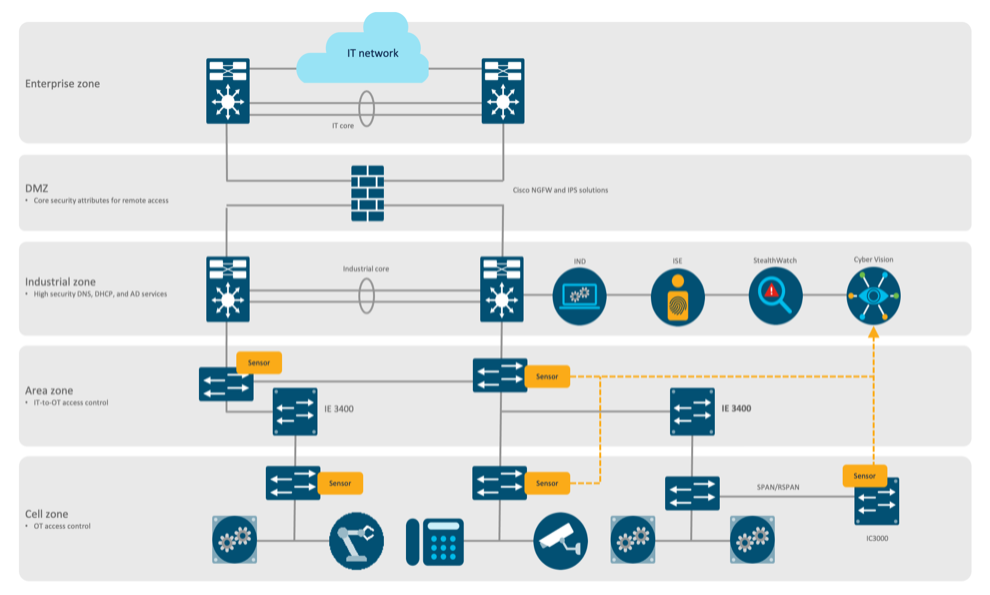Digital twins and the industrial internet of things (IIoT) are cutting-edge technologies that wow manufacturers of all sizes, in all sectors, geographies, and industries.
At the core, there are two fundamental building blocks: ‘networking’ all operational technology (OT) assets and real-time ‘visibility’ of their status, service, and other telemetry. Every traditional manufacturers need these if they want to leverage technology to build innovative smart factories in the future. However, if manufacturers want to gain an advantage on their competition, they need to start acting on this immediately and lay the foundation..
For most, finding the money isn’t hard – a sizeable sum is often reserved for ‘digitization’ by most CEOs and supported by their board of directors and stakeholders. Finding a partner who can provide technology and advice that is grounded in experience, , on the other hand, is the challenge. That’s something we learned from one of our new clients, an organization running a market-leading copper smelter, looking to prepare for the digital-era and truly transform its operations.
They chose Cisco’s multi-solution architecture because doing so gave them an opportunity to digitize, visualize, and protect their assets, and ultimately lay the foundation to help them create a more efficient, digitally optimized, and intelligent business, from the inside-out.
Bringing the factory ‘online’
The client knew that their OT assets – a number of flash smelting furnaces, converter furnaces, anode furnaces, anode casting wheels, and refineries – were isolated in their present form, and hence, provided no data or intelligence to the organization. This needed to change, and quickly.
Together with Cisco, the organization built a ‘factory network’ to connect its OT assets. For the first time, it could access, and harness, its operational data in real-time. Immediately, the market-leading copper smelter became more efficient; it could not only tap into its assets digitally to understand what went wrong when a fault needed troubleshooting, but also use that data to plug into predictive maintenance models and be able to predict these faults before they happen and reduce downtime to a great extent.

Besides being an immediate win for the implementation team, it reassured stakeholders that the investment, and choice of partner, were prudent. Truth be told, a reliable factory that only has planned downtime for maintenance, is incredibly valuable to an organization in this competitive age. Data-driven intelligence, after all, enables managers and leaders to make bold operational and strategic decisions that maximize value and minimize shocks.
Security comes first
Think of the ‘factory network’ as a layer that continuously collected data from every single piece of equipment on the floor and shared it with the business’ IT systems. Yes, it is key to realizing the ‘converged IT and OT’ dream where use of intelligence and automation come naturally, but it also means accepting that OT assets face a certain degree of cyber risks. Being online, they’re potentially susceptible to cyberattacks which could bring operations to a grinding halt.
Our security-first approach, therefore, was another key reason our client chose us. Here’s how we helped them: Cisco advised the organization to create a tiered network instead of a flat one to ensure proper segmentation and control.
More specifically, the organization adopted a three-pronged approach to ensure its OT infrastructure was secure despite its drive to digitize itself. First, the team ensured segmentation of its network based on the intent of OT, with IT enforced policies. Next, it secured IT/OT convergence, and finally, it enabled secure remote access for external experts to maximize security without hampering productivity.
All that sounds great, but the reality is that a successful attack for the market-leading copper smelter could result in multi-million-dollar losses.
Hence, we went a step further to secure their operations by deploying a unique solution as part our proposed architecture. Some of the advantages that the client gained include automated discovery of new and existing industrial assets, detection of abnormal behaviors and potentially infected users and devices to trigger alerts for events that needed to be investigated, and seamless triggering of suitable action in other components of the architecture.
Now, the client can rest assured that its newly established digital-first architecture can fend off threats as its leaders find ways to leverage the data in new and interesting ways.
According to our consultant leading the project, the journey to digital is a long one. For the market-leading copper smelter, making the decision to invest with a partner who offered an end-to-end solution was the key to its success. They aspired to digitize, visualize, and protect their OT assets, and Cisco’s breadth of portfolio and depth of experience made a world of difference to them.
Philosopher Aristotle once said, “well begun is half done”. Efficiency gains, downtime reductions, visualized intelligence, and smart automations are underway. Keep an eye out – we’re sure the market-leading copper smelter is about to make (more) headlines; What do you aspire to do with our technology?